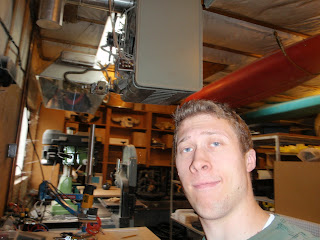Import
of Thermoformed Plastics
Thermoformed
plastics are extremely important in our society. Plastics that have been created through the
thermoforming process are being assimilated into our homes and businesses. Thousands of plastic products are aesthetically
pleasing, have made life easier, and are more environmentally friendly. The video that has been posted earlier, and
that can be found on YouTube,
shows many visually pleasing and practical items that have been designed.
Plastics are
durable, light weight, and cost effective, and there continues to be new
innovations that further our society, economy, and culture. Plastic products have been and will continue
to be part of our future. They have made
their mark, and are here to stay.
When discussing
plastics in general think of the futuristic advancements made by John Huntsman
Sr. He was “key in developing the first
plastic egg carton. In 1974, [the] Huntsman
Container Corporation created the "clamshell" container for
McDonald's Big Mac and developed other popular products, including the first
plastic plates, bowls and fast-food containers.”[i] His inventions as with the many others have
made a huge impact on our society. We have benefited greatly from these products
and their demand is rapidly increasing.
Thermoformed
plastics are also extremely sought after, having an astounding world market
value. Companies span across the globe
with Beaverton, MI as the plastic thermoforming capital
of the world. The North American market
alone encompasses over 10 billion dollars from the thin and heavy gauge
plastics industries.[ii] It has become a competitive and promising
market with investors and entrepreneurs looking at the possibilities. Markets are continually investing in the
research and development of new products.
One of the
greatest examples of companies accessing this great technology is Lifetime
Products. “Lifetime Products Inc. is the world's leading manufacturer
of blow-molded
polyethylene folding
chairs and tables, picnic
tables, and home basketball equipment. [Who] also manufacture other
consumer products, including sheds, trailers, kayaks and paddleboards, and lawn and garden items...”.[iii] My friend, Mike Todd, is currently working on
a patent for a new Kayak design; his innovation and others like him will be
able to enhance many existing products that are made of different
material. They can be made lighter,
stronger, and cheaper.
These plastics are
also beneficial because they are recyclable.
“Most thermoforming companies recycle their scrap and waste plastic,
either by compressing in a baling machine or by feeding into a granulator
(grinder) and producing ground flake, for sale to reprocessing companies or
re-use in their own facility. Frequently, scrap and waste plastic from the
thermoforming process is converted back into extruded sheet for forming again”.[iv] This process lessens the cost of waste and
decreases the price of the products that are being made.
Plastics are more
environmentally friendly compared to other similar products such as styrofoam. “The production of one ton of styrofoam
requires 685 gallons of oil, and emits 94,119 tons of CO2 and 2,055
tons of greenhouse gases.”[v] We need to utilize plastic products and get
rid of the old and obsolete. Plastic
products are the future and we need to see their importance. These items, at times, have been taken for
granted. Many overlook the ease,
environmental safety and aesthetics that they possess. I am personally invested in the process and
am hopeful to take part in this great market and benefit society.











